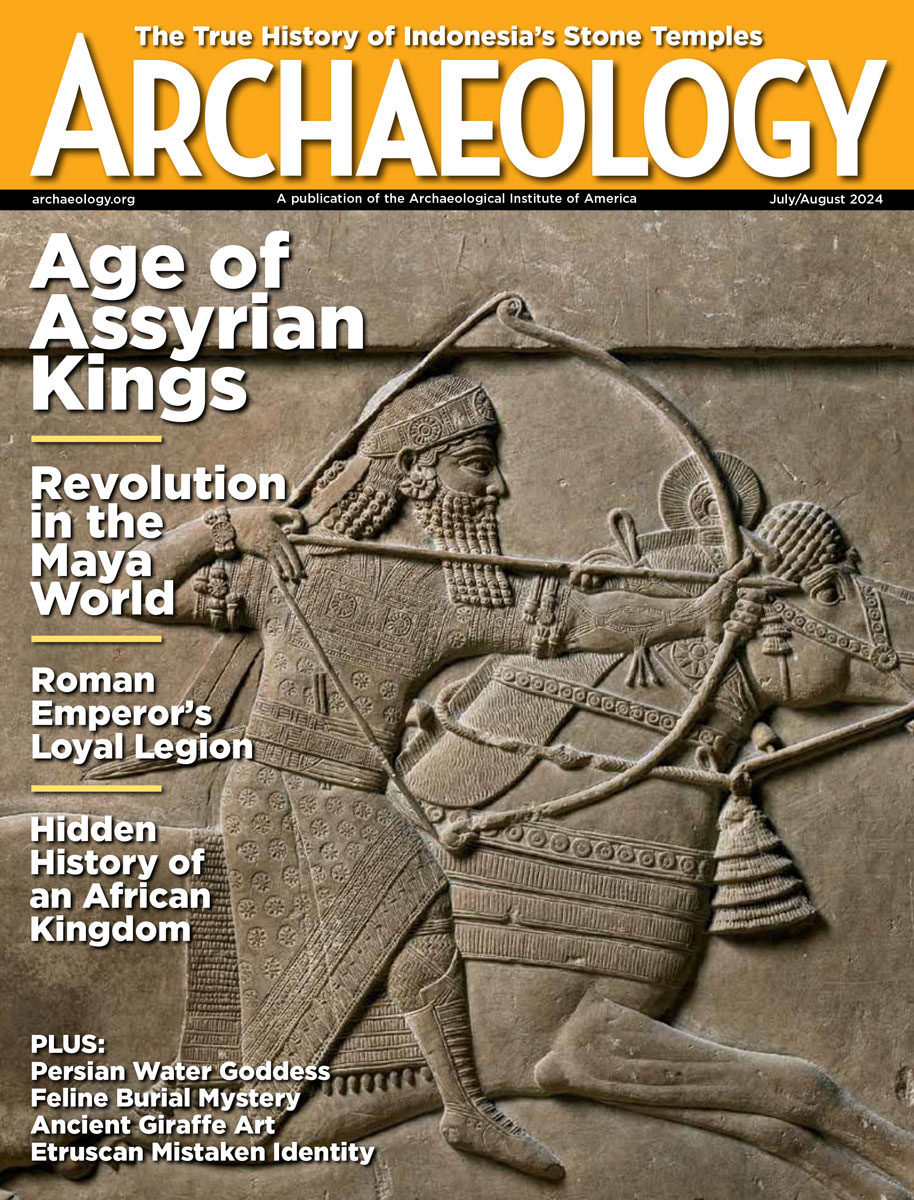Friday, June 13
June 13, 2008
Archaeologists have raised what they are calling the first uniform, co-ordinated weapons system from a late sixteenth-century English shipwreck off the coast of Alderney. “We cannot wait to get a closer look at it once it has been cleaned up. Archaeologically and historically, this is an important day,” said Menus Bound of Oxford University.
A Scottish gold coin dated 1601 was unearthed at the Colony of Avalon in Newfoundland, which was founded in 1621 by George Calvert, who later become Lord Baltimore. Â
Australian National University PhD candidate Debbie Argue has suggested that Homo floresiensis descended from Australopithecus garhi, which lived in Africa some 2.2 million years ago. “The hobbit has some very ancient australopithecine characteristics, which suggest its ancestors were tiny. . . . If we’re right, it means some hominin must have moved out of Africa about two million years ago,” she said.  Â
Wildfire threatens Comanche National Grassland in Colorado, home to 1,000-year-old rock art and rock huts built by early homesteaders. Â
A date palm tree sprouted from a 2,000-year-old seed found at Masada is now three years old and four feet tall. Â
Fifty sets of human remains have landed on Vancouver Island with their Tseycum Nation descendants. The bones had been collected and sold in the early twentieth century by archaeologist Harlan Ingersoll Smith. Â
Meanwhile, there are new excavations of American Indian bones and artifacts in northern California near the Oroville Dam. The digging is required by law in order to assess the dam’s impact on the surrounding area, but some Konkow Maidu people want it to stop.  Â
Digging has stopped at the mass graves of fallen World War I soldiers in Fromelles, France. “We now have artifacts that show we have uncovered the remains of both British and Australian soldiers,” announced Australian Defense Minister Warren Snowdon.
- Comments Off on Friday, June 13
Thursday, June 12
June 12, 2008
The skeletons of 16 horses, a two-wheeled chariot, and two human skeletons were found in a Roman grave in northeastern Greece. The chariot would have been used in war or for hunting, and was decorated with a frieze relief in bronze depicting three of Hercules’ labors.
The practice of slavery in Philadelphia came to light last summer with the excavation of the first President’s House, where George Washington lived with several enslaved servants. Now Christ Church, another colonial landmark, is highlighting its own history of slavery in its tours. Â
A construction project in Newburgh, New York, has unearthed 17 individuals from an African-American cemetery. The article doesn’t mention how old the cemetery is, just that bones were first found there in 1870. Â
Archaeologists will use a laser scanner to pinpoint where each body lies in the mass grave of fallen World War I soldiers in Fromelles, France. Data recorded by the laser scanner will also help produce a three-dimensional image of the remains and artifacts. Â
In Albuquerque, archaeologists are excavating the Alameda Pueblo, located beneath an elementary school’s soccer field. They have uncovered the bones of five people, pottery, and hearths from 1300 A.D. Â
There’s no new information in this article on the discovery of Montezuma’s Casa Denegrida in Mexico City, but there is a video that shows an archaeologist working at the site.  Â
“Sunken City,” once a “community of bungalows,” sits the southernmost tip of Los Angeles. In 1929, the neighborhood started to slide into the sea and had to be abandoned by 1941. “There’s all this ancient 80-year-old stuff – you can see the type of construction of the roads and the type of construction of the electric line. It’s almost like an archaeology exhibit,” said John Nieto of the Palos Verdes Peninsula Land Conservancy. Â
A Roman bronze statue of Venus was reportedly found at Trimamium in Bulgaria.
- Comments Off on Thursday, June 12









